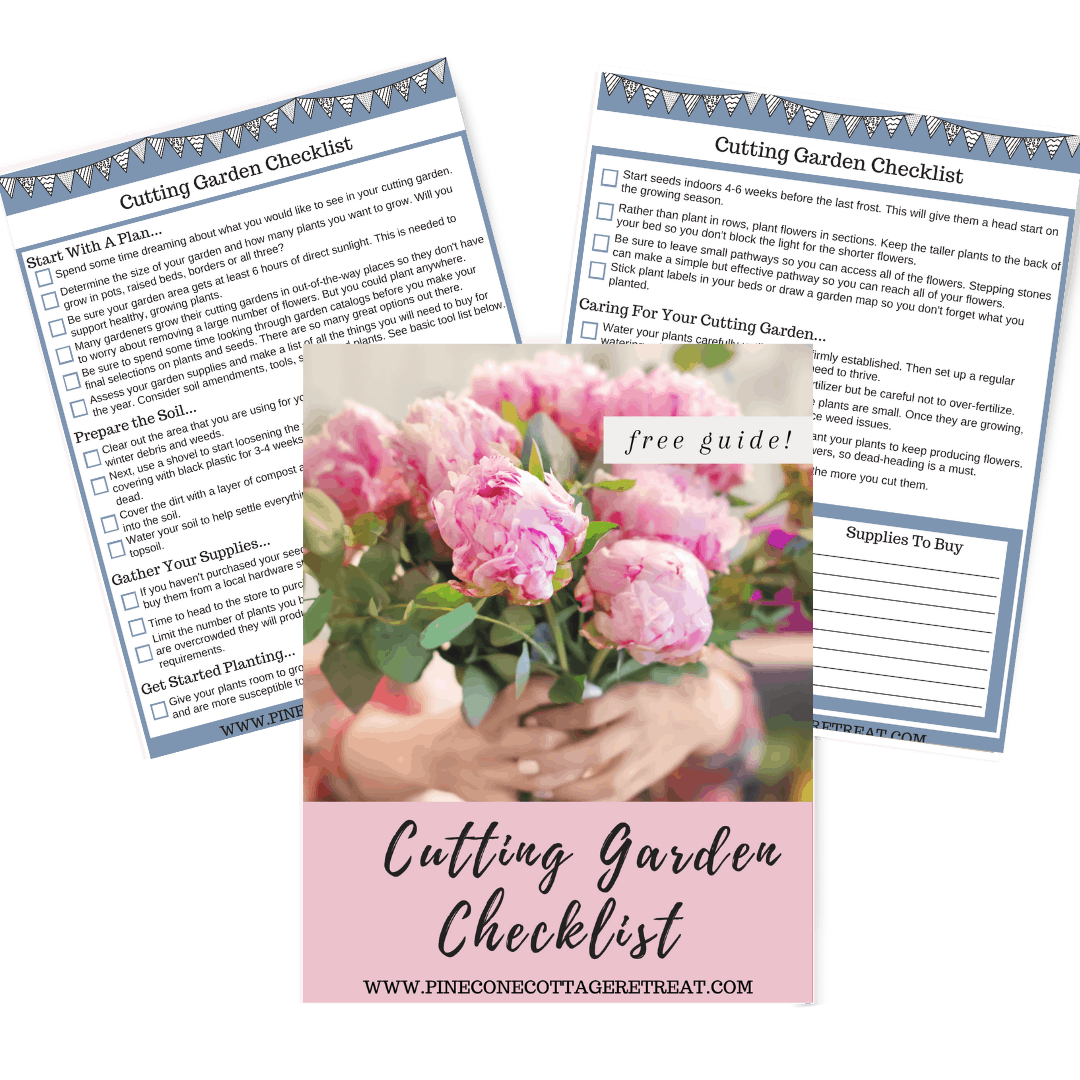A number of years ago, I began planting a cutting garden so I had flowers to bring inside without using my shrubs and container flowers to get my bouquets. As my cutting garden grew, I often had enough flowers to share with friends and neighbors.
Today, I purposely plant a large section of flowers specifically for this reason. Growing a cutting garden can supply all the flowers you need. And if you combine these flowers with herbs, you can make especially fragrant herbal bouquets.

Grow Amazing Flowers...
*Find the secret to growing a bountiful cutting garden
*Grow more flowers to enjoy and share
*Get started with this FREE Cutting Garden Checklist
Bouquets can be used as a hostess gift, for table decorations, and for your porch decor. Take bouquets to Nursing Homes and shut-ins. Share one with your Secretary or your Doctor’s office. Press your extra flowers to make crafts such as thank you cards. There are so many wonderful things to do with your cutting garden flowers.
Now you might wonder how to get started growing a beautiful cutting garden. Just follow these steps to learn how to create a cutting garden of your own.

3 Things to Consider When Creating Your Own Cutting Garden…
What Makes a Good Flower for Cutting:
- Long-lasting blooms
- Easy to grow plants
- Not prone to bug infestations such as aphids
- Adds textural interest to your bouquets (smooth, lacy, ruffled, spiky)
- Inexpensive annual to plant from seeds or as a perennial
- Grows abundant flowers the more you cut them
- Low maintenance
- Drought tolerant

Good Options for Your Cutting Garden:
- Cosmos
- Zinnia
- Black-eyed Susan
- Daisy
- Coneflower
- Snapdragons
- Sweet Peas
- Salvia
- Coreopsis
- Calendula
- Sunflower
- Dahlia
- Sweet William

How to Get Started Growing Your Cutting Garden:
- Choose an area that is not front and center in your yard. A back corner or an area of your vegetable garden works well. Make sure that your flowers will get at least 6 hours of sunlight and regular water.
- Prepare your soil by mixing in compost or steer manure. Turn it over well to mix it all in, especially if using steer manure.
- Set your cutting garden up in rows or sections. You want to have access to all the flowers so make sure to leave pathways or make your beds small enough to reach from all sides.
- You can plant seeds directly into the soil or start your seeds indoors before the last frost to get a head start. I generally plant my seeds in the early spring in trays. Then transplant the seedlings into my beds as the weather warms.
- For perennials such as the Shasta Daisy and the Coneflower, plant them in areas where they can come back year after year.

- Occasionally fertilize your flowers. They will not need frequent fertilization, but once a month give them a little boost.
- Once your flowers start blooming, you’ll want to cut frequently. Most of the annuals, perennials, and biennials listed above, will continue to bloom the more you cut them.

Being able to generously give flower bouquets away is such a thoughtful practice. When you grow a cutting garden, you’ll not only have enough flowers for your own bouquets, but you will have more than enough to share. Flowers can perk up anyone’s day. So take the time to plant a cutting garden this year and your shrubs and container flowers will thank you.


